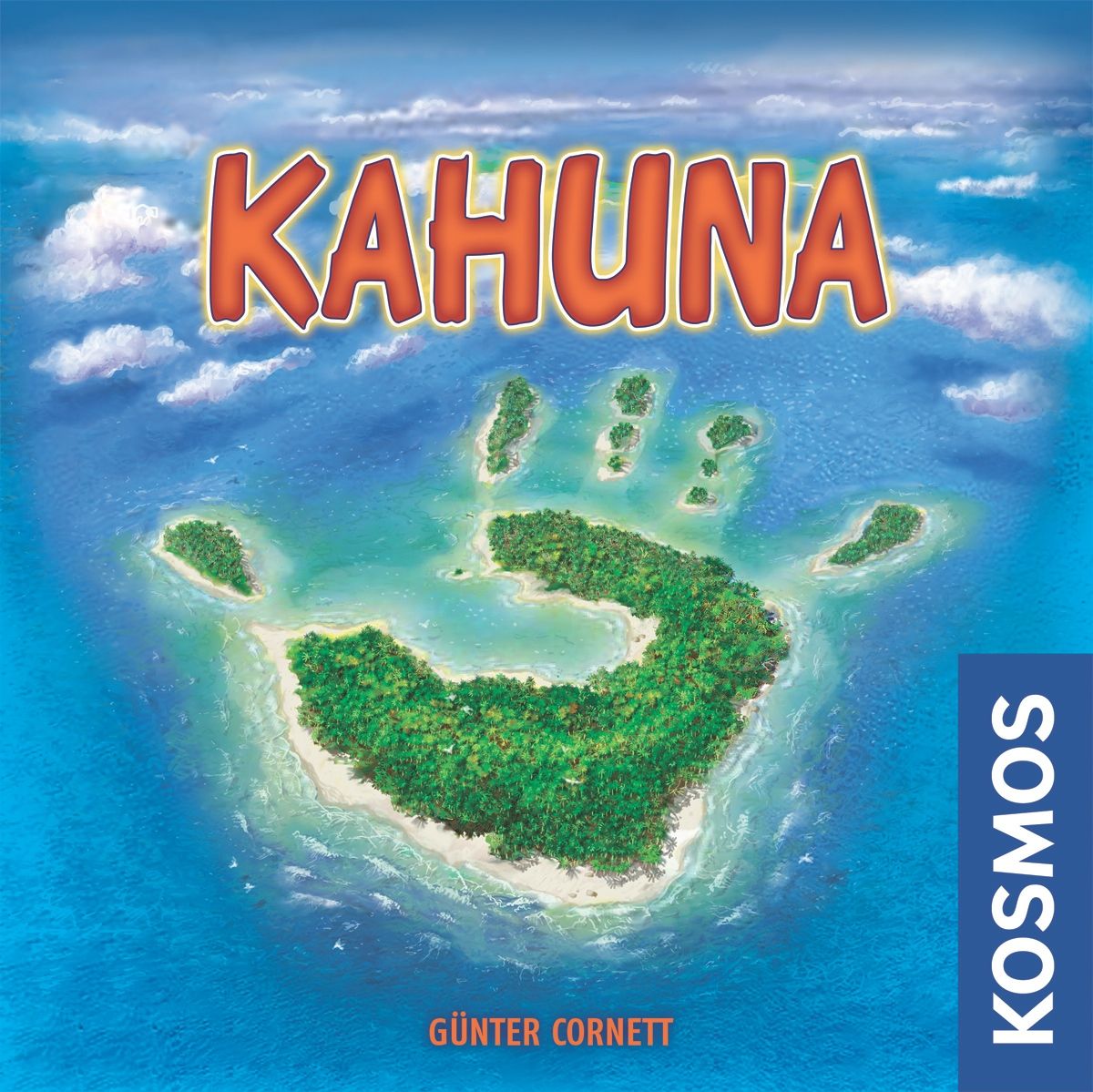Kahuna (1998)
Temps de jeu: 40
Age min.: 10
Joueurs: 2
Editeur: Filosofia Éditions, IELLO, White Goblin Games, Galakta, Paper Iyagi, Swan Panasia Co., Ltd., Laser plus, Korea Boardgames, Arclight Games, 999 Games, KOSMOS, Tilsit, Rio Grande Games
Concepteurs: Günter Cornett
Artistes: Michaela Kienle, Thilo Rick, Claus Stephan, Anke Pohl
Mécaniques: Area Majority / Influence, Network and Route Building, Take That, Hand Management, Open Drafting
Age min.: 10
Joueurs: 2
Editeur: Filosofia Éditions, IELLO, White Goblin Games, Galakta, Paper Iyagi, Swan Panasia Co., Ltd., Laser plus, Korea Boardgames, Arclight Games, 999 Games, KOSMOS, Tilsit, Rio Grande Games
Concepteurs: Günter Cornett
Artistes: Michaela Kienle, Thilo Rick, Claus Stephan, Anke Pohl
Mécaniques: Area Majority / Influence, Network and Route Building, Take That, Hand Management, Open Drafting
Afficher la description Afficher les commentaires Tendance des prix
"Who will rule the South Seas? Two Kahuna - ancient sorcerers of the Pacific - compete for dominance on an archipelago consisting of twelve small islands. Using their magic and wisdom, they struggle for control of the islands. They anxiously await the cards handed to them by fate. But when the time is right, they move to capture one, two, or even more islands, trying to gain the upper hand. At the mercy of the magical powers of the South Seas, they quickly realize that even the best magic is no good without strategy."
Originally published in 1997 as Arabana-Ikibiti by the designer's own publisher Bambus Spieleverlag, then reprinted by Funagain in the U.S., Kosmos' Kahuna – part of its Kosmos two-player series – is the best known implementation of this design.
It's a two-player game, played on a board depicting twelve islands. Players use cards to place bridges between these islands or remove opponent's bridges. If you get the majority of bridges around an island, you place one of your marker stones on it and also remove any of your opponent's bridges to that island – which might cause them to lose a bridge majority on an adjacent island and lose a marker stone there.
The game is played in three rounds. A round ends when all cards from the face down deck and the three face up cards have been taken. Then points are scored for the islands with a marker stone on them. The game can also end sooner when one player has absolutely NO bridges left on the board.
The Kosmos edition has excellent graphics and nice wooden pieces and plays very well.
Reimplements:
Arabana-Ikibiti
Reimplemented by:
Kanaloa
Originally published in 1997 as Arabana-Ikibiti by the designer's own publisher Bambus Spieleverlag, then reprinted by Funagain in the U.S., Kosmos' Kahuna – part of its Kosmos two-player series – is the best known implementation of this design.
It's a two-player game, played on a board depicting twelve islands. Players use cards to place bridges between these islands or remove opponent's bridges. If you get the majority of bridges around an island, you place one of your marker stones on it and also remove any of your opponent's bridges to that island – which might cause them to lose a bridge majority on an adjacent island and lose a marker stone there.
The game is played in three rounds. A round ends when all cards from the face down deck and the three face up cards have been taken. Then points are scored for the islands with a marker stone on them. The game can also end sooner when one player has absolutely NO bridges left on the board.
The Kosmos edition has excellent graphics and nice wooden pieces and plays very well.
Reimplements:
Arabana-Ikibiti
Reimplemented by:
Kanaloa
Nous n'avons actuellement aucune donnée de prix pour ce jeu.
Ce jeu n'est actuellement pas échangé sur la place de marché:
Ce jeu n'est actuellement pas listé sur la place de marché. Si vous voulez vendre le vôtre, veuillez l'ajouter à la place de marché.
Place de marché
Jeux liés
ag.gameitem.lastUpdated: 2025-05-21 14:33:48.239















